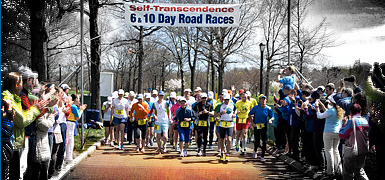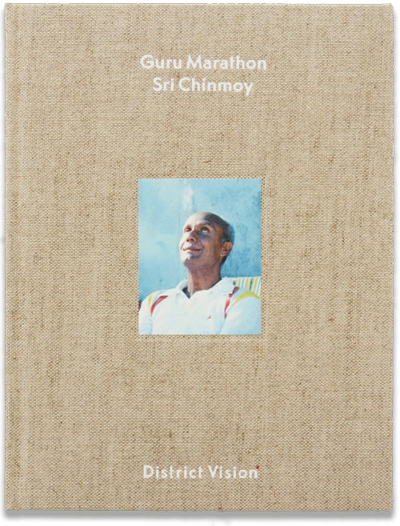A few personal impressions from this years 6 day race in New York’s Flushing Meadows Park, 18–24 April 2022, by Shashanka Karlen
A multi-day race is a good way to discover the flexibility and fluidity of time. In the beginning, when you have covered your first 6-10 hours and realize what you have gotten yourself into, the look forward to the end of 6 days can be really frightening. At least for the mind. It seems an infinity of time away and mentally you may wonder how you can actually ever reach that goal. There are moments during the race where time does not seem to move, where each lap is just simply very hard work and there seems to be no way out, no person to talk to, no special food that would uplift you, no piece of music that would carry you forward. Don Winkley, the American Ultra runner, still running at 83, calls these “the character-building miles”. I thought of him several times during the race also because he had so many great stories to tell when we met 10 years ago during the Self-Transcendence 10 day race.
On the other hand, when you look back after 3 or 4 days to the beginning of the race it seems that time practically flew by, that all went so quickly that you could hardly grasp it. And even now, the second day after the race time has already moved on and we try to quickly preserve all the treasures that have come along the way of these 6 days.
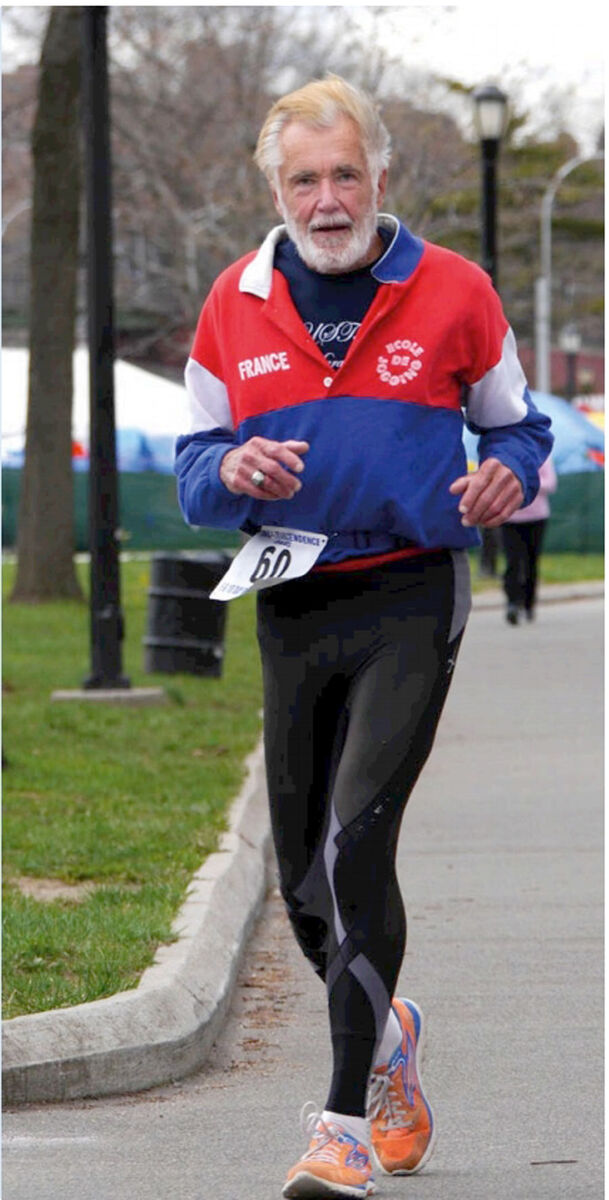 The bathtub by Don Winkley
The bathtub by Don Winkley
Don Winkley told me this story back in 2012 and it remained anchored in my memory ever since. Don said that once he had a very difficult race, the weather was miserable and at some point he said to himself “After this is over I will get a nice suite at a hotel and enjoy myself.” Once the race was over he did exactly that, checked in at the hotel and got a very large beautiful suite. The problem was that Don was in such a bad physical shape and the bathroom was very far away from his bed. As he needed the bathroom frequently and the distance was too far he finally decided to sleep in the bathtub...Poor Don!
Ode to Joy
One evening, I believe it was on the 3rd day, around midnight I got the inspiration to listen to Beethoven’s 9th Symphony. I thought, good, this will take care of the race for 1 ½ hours, the total length of the four movements. There is a special live recording from December 1989, recorded in Berlin just after the Berlin Wall came down and includes musicians and singers from both East and West. The conductor is the famous Leonard Bernstein. Feeling the pulse of time, he took the freedom to change the name from “Ode to Joy” to “Ode to Freedom”. It is indeed a very special recording of a very special symphony in a very special moment of human history. This symphony has become a global hymn to freedom and the brotherhood of man and is loved more than ever.

Interestingly enough the next morning Kodanda, the “race-musician” played the theme of Ode to Joy, without knowing anything about my experience the night before. I thought it was a nice proof how on an inner level feelings and thoughts travel freely and are picked up, it may be as close as a few meters like in this case or it may be on the other side of the globe.
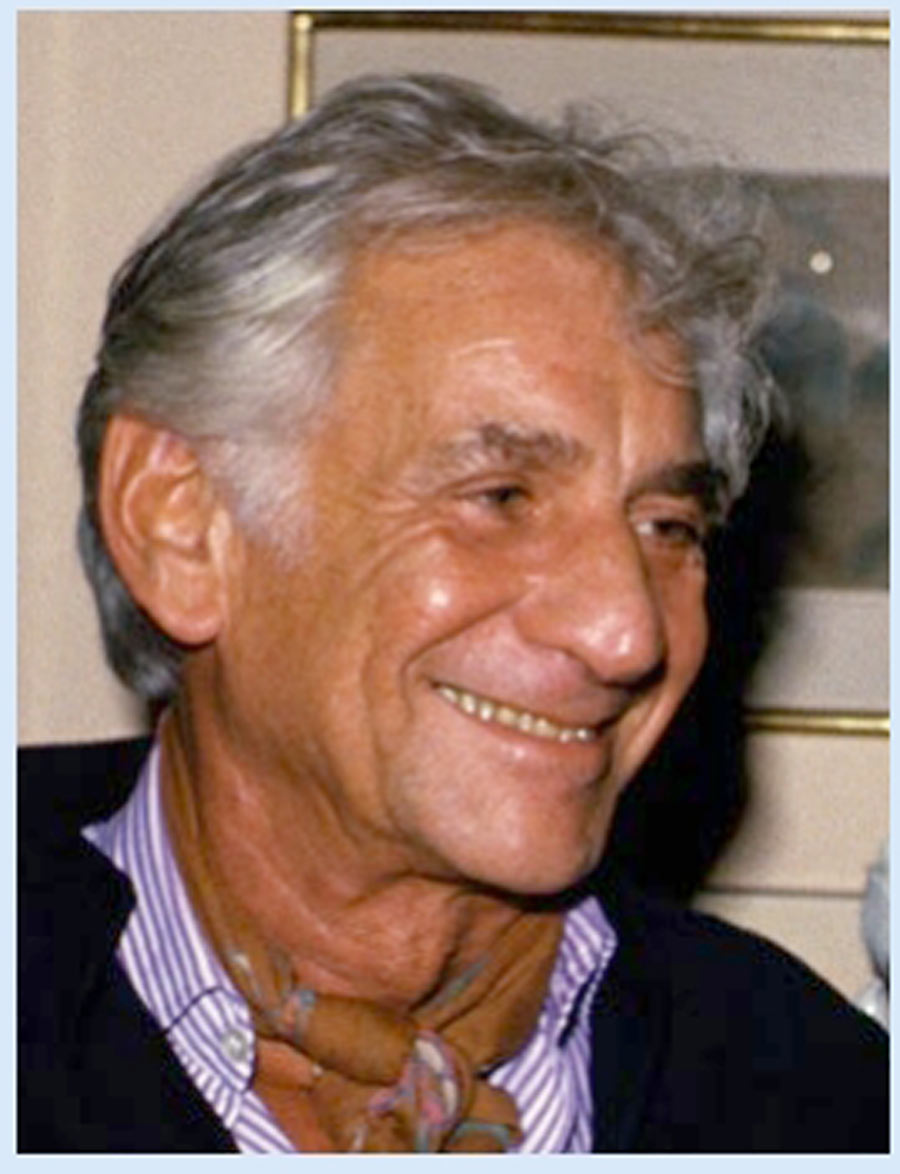 “Somehow it must be possible for us to learn from his [Beethoven’s] music by hearing it, no, not hearing it but by listening to it with all our power of attention and concentration. Then perhaps we can grow into something worth being called “the human race”. ...In this time of world agony and hopelessness and helplessness, we love his music and we need it. As despairing as we may be, we can not listen to this 9th Symphony without emerging from it changed, enriched, encouraged.” - Leonard Bernstein 1979
“Somehow it must be possible for us to learn from his [Beethoven’s] music by hearing it, no, not hearing it but by listening to it with all our power of attention and concentration. Then perhaps we can grow into something worth being called “the human race”. ...In this time of world agony and hopelessness and helplessness, we love his music and we need it. As despairing as we may be, we can not listen to this 9th Symphony without emerging from it changed, enriched, encouraged.” - Leonard Bernstein 1979
I think also for many other Ultra runners listening to music is an important support. I don’t know what other runners listen to, except maybe from the story that Grahak told from the 3100 mile race. He was listening to heavy rock music and was suddenly called to Sri Chinmoy’s car to get Prasad (blessed food) and he somehow did not manage to turn off the music. Even though it was only in the earphones, the music was clearly audible and he felt embarrassed... Like in the case of the perception of time, a multi day race also makes you much more sensitive to music and different kinds of music and their effect on yourself. I listened a good amount of time to Sri Chinmoy’s music and I liked particularly his singing. I could make a very easy connection to him through his singing. It just goes directly to your heart and soul.
Sometimes I would listen to popular music. “Paradise” by Coldplay came up, “Sultans of Swing” by Dire Straits, “Comfortably Numb” and “Echos” by Pink Floyd (bringing back memories from long forgotten times). Later I discovered “Deja Vu” by Crosby, Still, Nash and Young and this worked very well with its rhythm and lightness. I was very careful not to cross a certain line, because I felt it would have a detrimental influence on my inner state of being. For example, Led Zeppelin’s “Stairway to Heaven” was beyond that red line even though I enjoyed this song 40 years ago when I was DJ in a Club.
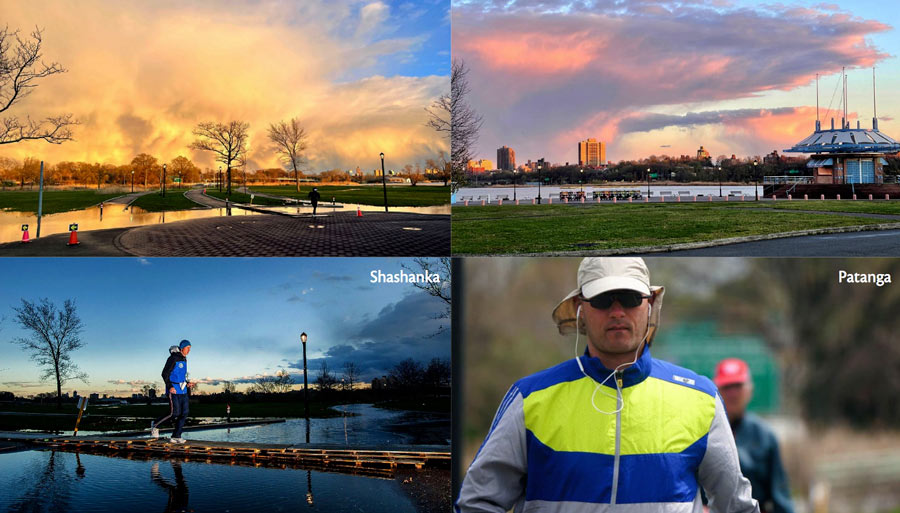
The fourth dimension
One evening when Patanga came to the counting area he had a mystical, otherworldly look on his face. He suddenly looked up, lifted his right arm and pointed to the sky. He did not say anything. I was reminded of a scene in Martin Strel’s movie about swimming the entire length of the Amazon river (3273miles/5268km) in 2007. There is a moment in the film where he is alone standing on the shore of the Amazon in the middle of the Jungle and you see him from the back, immersed in this glorious nature, pointing with both hands to the sky. They are declaring in the film that Martin has entered “the fourth dimension”. For me the “fourth dimension” signifies the moment when there is no more separation between Paradise, you and nature, you become completely part of it. It is a direct, authentic, immediate experience of nature as it really is and you are part of it.
A multi-day race or other similar events (or even long training runs in beautiful nature) help greatly to become more subtle and receptive to this kind of experience. There were moments in this year’s race where these “ecstatic” moments of grace appeared, mainly in the morning at dawn.
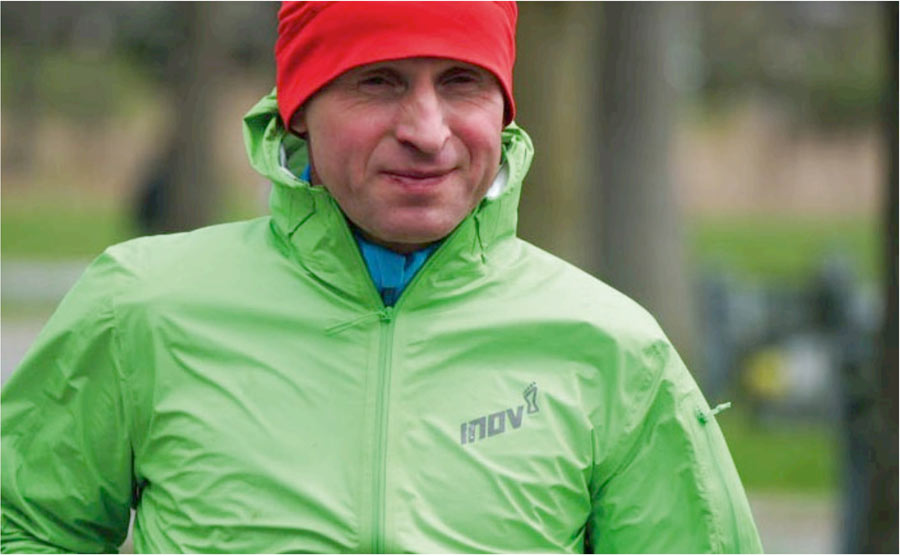
The “4 Lap Interview” with Ananda Lahari
Ananda Lahari does not speak much during a race, his smile though has become legendary. I feel privileged therefore to have had the opportunity to do 4 laps with him. Maybe this exception happened because it was meant to be, like the fact that we were neighbours both on our race tables as well as with our tents, both totally “by chance”. I had just come out of the medical tent, in the morning of day 3. After a good early session of 8-9 laps of “refreshed” running, I suddenly felt a shooting pain in the shin of my right leg... I had become one of the many victims of shin splints and was not happy about it. In the corner after the medical tent and the bathrooms, Ananda Lahiri was just appearing and we started to walk together. He gave me an insight into his unique life and running universe and also greatly encouraged me concerning my shin splints. He gave me an overview of how people have dealt with it both physically as well as mentally. He mentioned cases where runners were able to get rid of shin splints within hours! (Some of us may remember just the opposite - the 14 days Madhupran Wolfgang Schwerk was walking because of shin splints during one of the 3100-mile races in New York...).
Ananda Lahiri also concretely gave me tips for the best foot movement so that the foot would be relaxed but still locked to avoid the stress on the shin when rolling up. I used all of the advice as good as possible and it felt almost like a miracle that the pain almost disappeared and I could keep a good walking pace. Running though was out of the question. That is why this article is called “A long walk to myself ”.
The Master's Breath
One other thing Ananda Lahari mentioned was that he would sometimes focus simply on his breath. Then, he said, everything becomes completely simplified and focused.
There was a moment when the race was really difficult and I started to focus also on the breath. I started to breathe through the nose which I did not normally do before and I started to repeat mantras in rhythm with the breath. “Supreme” did not work so well but “Guru” worked very well. I would breathe in with Gu- and breath out with -ru. After having done this for a while I suddenly felt the Master totally close. It felt like he was opening some inner chambers for me to come in. That was probably my most fulfilling experience of the whole race.
Love and Serve
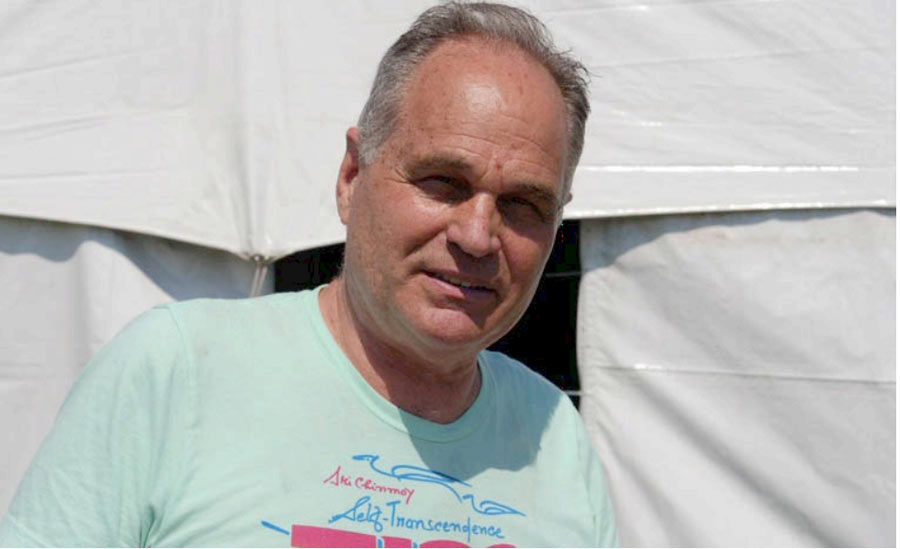 I love running the nights where all is more quiet and there are less distractions. One early morning, maybe around 2 am, Rupantar (the SCMT director) was just leaving from the counting station where he had jumped in and we met for a few seconds. I thanked him for putting on this great event and mentioned that it is simply “invaluable”. It is valuable beyond measure. Just the experiences of even one runner seem so tremendously beneficial. He was smiling and it became a treasured moment. I felt what others have said before: there is so much love, dedication, and service going into an event like that. I felt this from the set-up crew that was extremely helpful with putting up the tents, to the great cooking teams, the medical staff and also the counters. Specially those that were announcing the miles were all great and really added a very supportive energy. More generally, you can see Sri Chinmoy’s signature in all of that. His teaching, his love, love for the world but also very specifically love for the running world, for the runners and also for the ideal of self-transcendence. In the difficult times of a race it is extremely rewarding and consoling to experience this generosity of heart and soul.
I love running the nights where all is more quiet and there are less distractions. One early morning, maybe around 2 am, Rupantar (the SCMT director) was just leaving from the counting station where he had jumped in and we met for a few seconds. I thanked him for putting on this great event and mentioned that it is simply “invaluable”. It is valuable beyond measure. Just the experiences of even one runner seem so tremendously beneficial. He was smiling and it became a treasured moment. I felt what others have said before: there is so much love, dedication, and service going into an event like that. I felt this from the set-up crew that was extremely helpful with putting up the tents, to the great cooking teams, the medical staff and also the counters. Specially those that were announcing the miles were all great and really added a very supportive energy. More generally, you can see Sri Chinmoy’s signature in all of that. His teaching, his love, love for the world but also very specifically love for the running world, for the runners and also for the ideal of self-transcendence. In the difficult times of a race it is extremely rewarding and consoling to experience this generosity of heart and soul.
The Car Racers Flash Mob
During the last night, from Saturday to Sunday, shortly after 1 am, an avalanche of cars arrived in the parking lot. Very soon there were probably close to a hundred cars. In the middle, some cars with howling motors started to make sliding manoeuvres or demonstrated fast starts. Of course they had no idea that there was a running race going on and that a part of the parking lot was actually a running course. Imagine the runners, in the final period of the race, quite sensitive to what is going on in- and outside themselves. It felt to me like a sudden invasion, a hostile attack before the end of the race. Fortunately the people seemed to be all quite friendly and when the police finally arrived they all left, almost as fast as they appeared.
The Uniqueness of Flushing Meadow
The Sri Chinmoy Marathon Team has held Ultra races in Flushing Meadow park since 1985, for nearly 40 years. Countless races have been held here, and many epic battles between runners or even between runners and nature have taken place here. In 1985 Yiannis Kouros and a few dozen other runners battled through a hurricane, Kouros ending up with a world best of 178 miles (285km). Personally, I always struggle to get used to the permanent noise of the cars from the highways on three sides, the planes that are coming in or starting very low from close by La Guardia airport and also to the unpredictable, extremely fast changing and often cold wind that rattles through the park much of the running time. It adds definitely a layer of challenge on top of the running itself. Fortunately, the noise cancellation headphones are a big help and it is also astounding how quickly the body and the whole system adjust to these new conditions.

Each Journey is different
One thing that I find really fascinating is to see the vast differences in runners; the different nationalities, running styles, attitudes and ambitions and goals. You can clearly see that each runner is on his or her own journey. One day they are flying, the next day they may be nearly dying. Sometimes it seems that all are feeling a new breath of energy at the same time, it is like somebody is infusing energy into the runners or even breathing through the runners and suddenly the faces are lightening up and the bodies are cooperating. I must say I could not see enough of Wei Mings' absolutely incredible running style. His absolutely smooth and harmonious movements were of such grace and beauty it really felt like running in perfection.
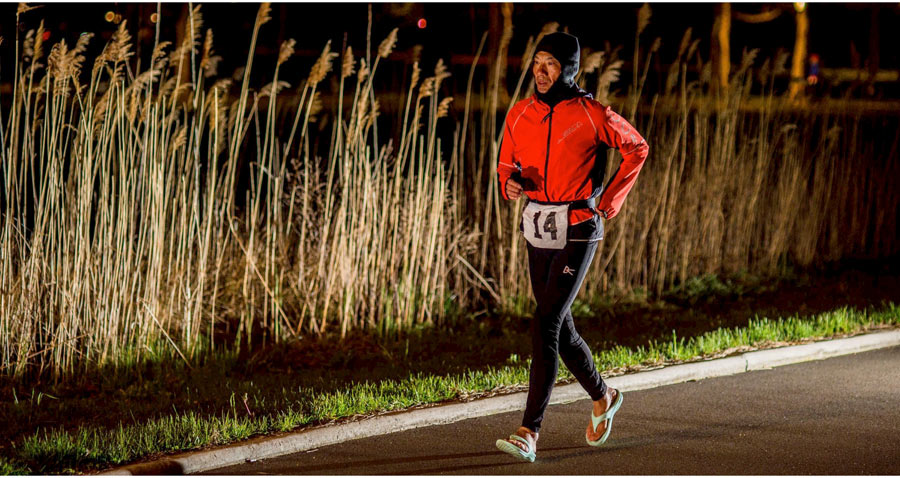
Inner World and Outer World
I did not watch any world news, specifically about the war in Ukraine during the entire race. I saw the danger that it would have a negative influence on my mental state and performance. On the other hand I felt clearly that all the runners (and helpers in any function) created such an incredibly positive energy through their efforts and aspiration. It was like a dynamo that was continually charged. I am sure that this positive energy will now continue to do its work in the world atmosphere and help to strengthen the positive forces and energies.
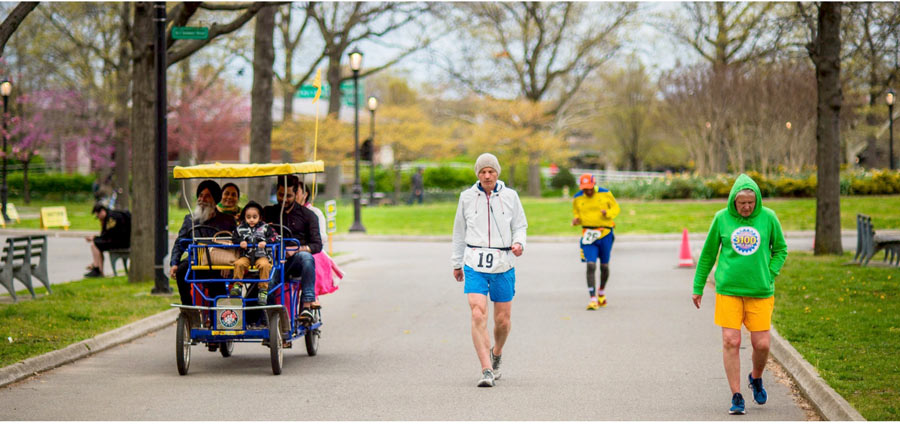
The Golden Shore
I think many if not most of the runners start longing from day 1 for the end of the race. The challenge is huge, the mind is unable to grasp the task, the problems set in soon... I think the longing remains for the duration of the race but then so many incredible things happen during these 6 days: there is an extraordinary depth of experience, there is the wonderful camaraderie, the team spirit, the smiles and warm support from all the helpers, the sense of achievement with each mile that has been put in the personal account. Then you start to realise that you will miss something when it is over, you may realise that something within you just opened up and is now ready to fly, you want to continue...I love running and running has given me so much over the last 40 years. I hope I can run or at least walk to the last day of my life!
I encourage all runners who feel the inspiration to move up to the Ultra level, to multi day running. It is worth the step, a deep, fulfilling experience is almost certainly guaranteed.
Shashanka, 24th April 2022 6 days: 278 miles / 448 km
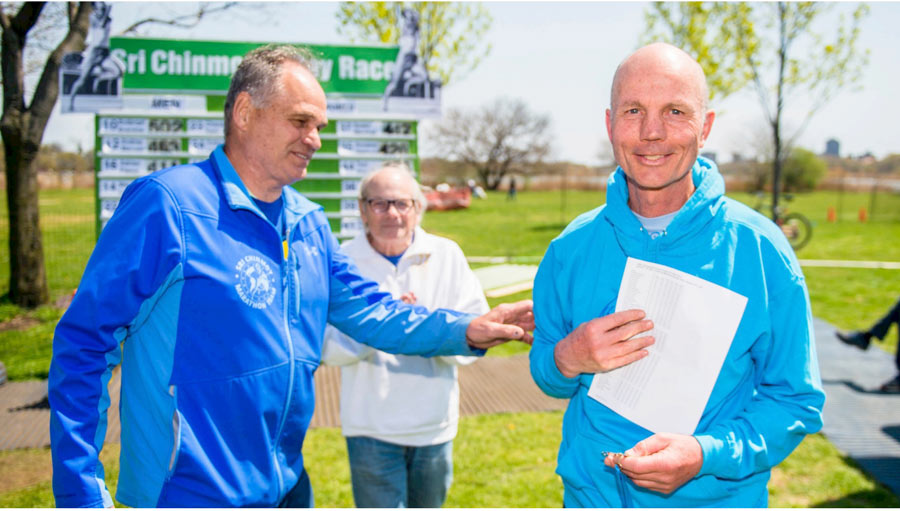

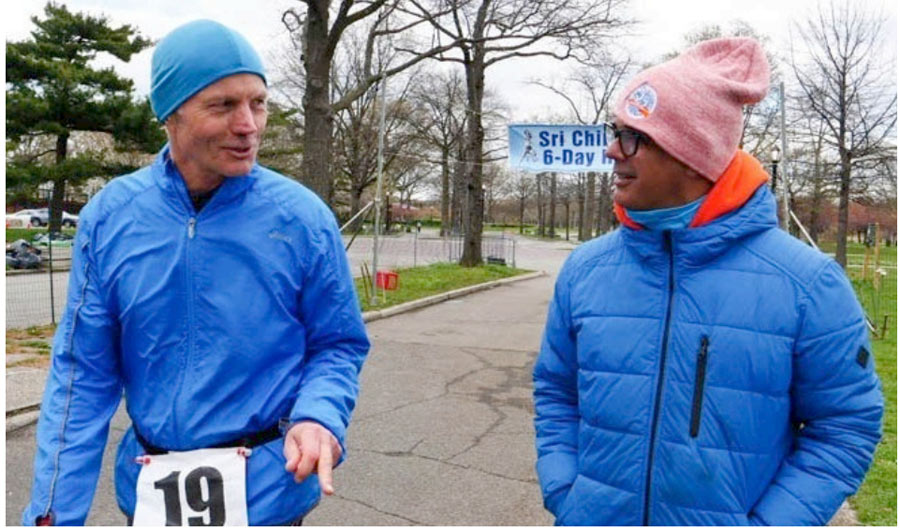 Author's note: May it be duly noted that these notes were strongly encouraged, if not demanded, by my spiritual brother Devashishu. Several of the topics appeared in creative exchanges while he was a lap announcer in the morning shifts.
Author's note: May it be duly noted that these notes were strongly encouraged, if not demanded, by my spiritual brother Devashishu. Several of the topics appeared in creative exchanges while he was a lap announcer in the morning shifts.
 Willis, Christopher. "On My Bookshelf: Running Around the Block." Ultrarunning, May/June 2013.
Willis, Christopher. "On My Bookshelf: Running Around the Block." Ultrarunning, May/June 2013.Also dispensed through the book are Grahak’s training and nutrition tips and, although they occasionally interrupt a good yarn or anecdote, most runners can learn something new – I didn’t’ know cabbage leaves were a good treatment for shin splints for instance, or that licorice cold help a stirred-up stomach.

